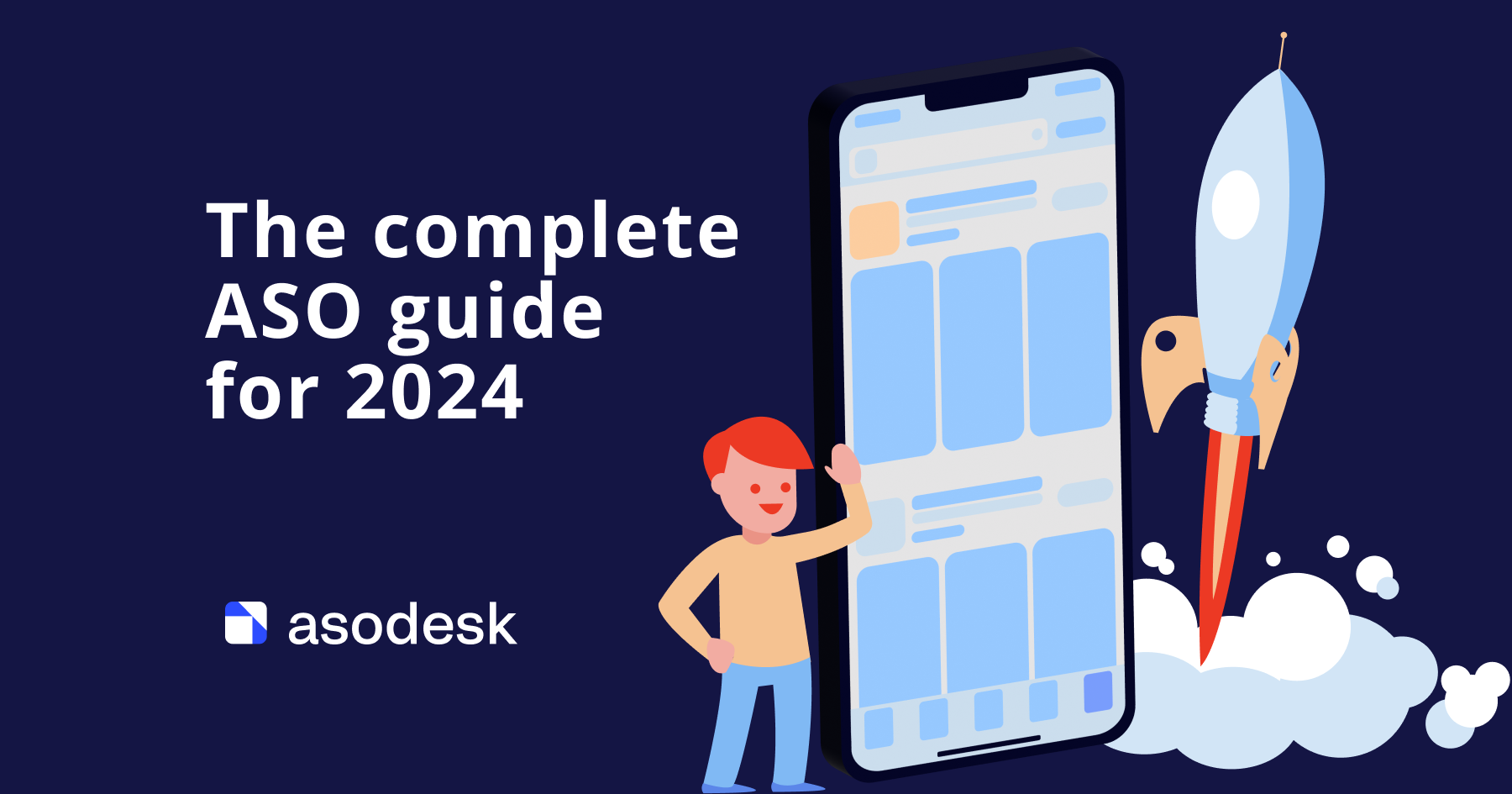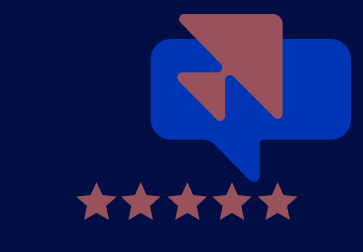How to use custom store listings on Google Play: 5 lesser-known tips

Custom store listings on Google Play help you share more about your app or game. You can set up who you want to show them to: for example, residents of a particular region or registered users who have not used your product for a long time. In this article, I’ll share how you can use the tool differently to effectively test ASO hypotheses and improve your conversion rate from impressions to installations.
Custom store listings on Google Play is a tool that allows you to adapt your page to different user segments or to those who visit the page through a special link. Google Play Console offers the option to create up to 50 custom store listings at a time.
This instrument is typically used to create a single funnel with external traffic, reduce the CPI of paid traffic, and increase pre-install conversion. In my experience, growth can range from 5% to 50%. When creating a custom store listing, you need to determine the audience, come up with a unique selling proposition, write text metadata, and design creatives.
In this article, I will share how to use custom store listings in an unconventional way in order to boost your app installs.
Contents
Tip # 1. Get additional indexing for search queries by setting up the region
Tip # 2. Create custom store listings in languages that aren’t available in the Google Play Console
Tip # 3. Conduct A/B testing in low-traffic regions
Tip # 4. Run up to 255 tests simultaneously for all the desired regions using custom store listings
Tip # 5. Run more accurate tests for audiences who speak a specific language
Tip #1. Get additional indexing for search queries by setting up the region
Custom store listings in Google Play set to a specific country or region are indexed by search algorithms. This is why I recommend taking into account popular search queries in the country for which you are creating a custom page. This will help improve indexing for target keywords and attract more installs.
When creating a custom store listing, select the “By country/region or user state” setting and add the desired country.
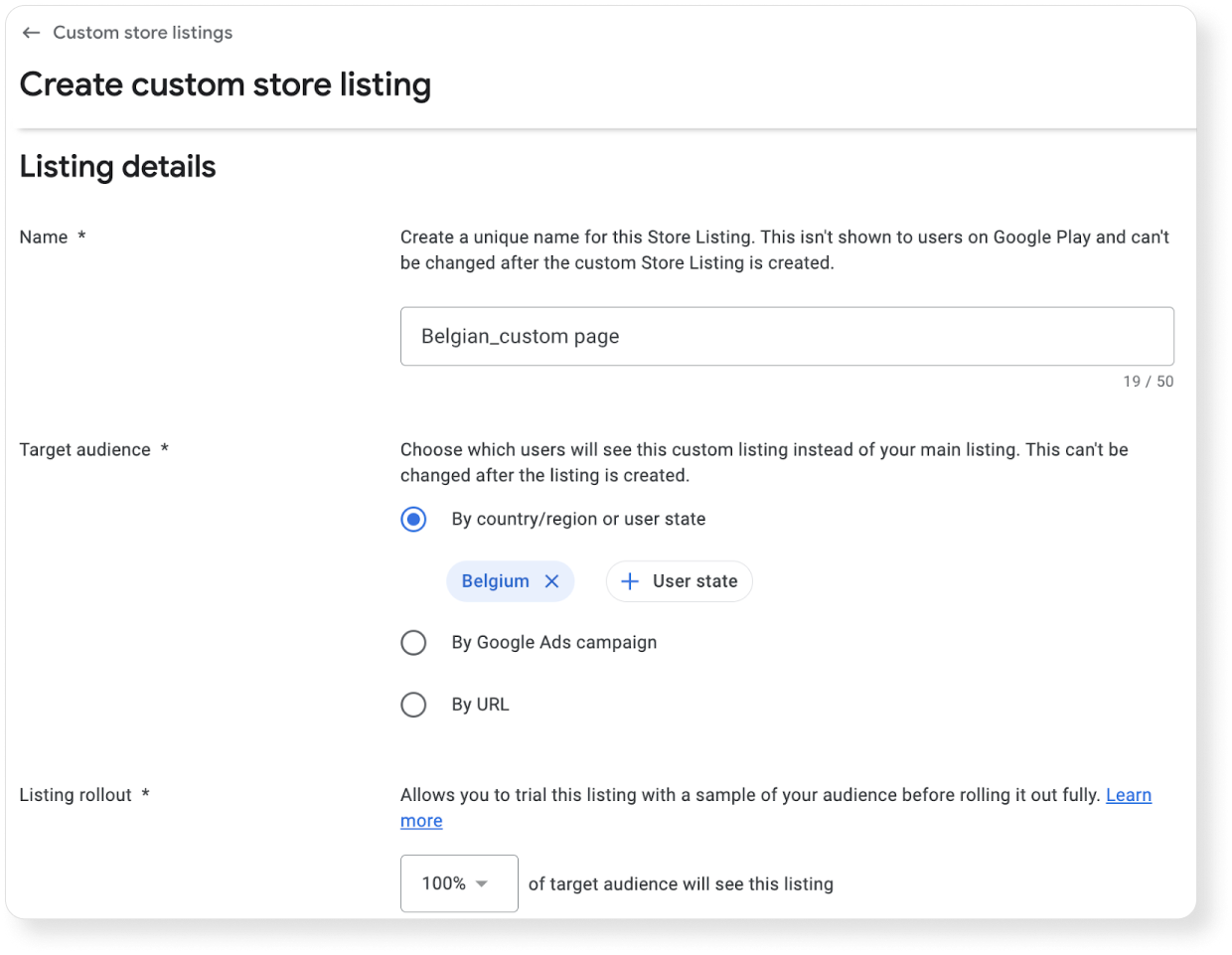
In the graph below, you can see how the indexing of an app for search queries for one of the projects has improved after consistent text optimization of three custom store listings.
I tracked the increase in page indexing using ASO Comparative Report on Asodesk. With this tool, you can easily check the dynamics of the number of queries for which your app is indexed for any period, as well as track changes in positions for the desired keywords. Try different tools for ASO and app review management for free with a 14-day trial.


Tip # 2. Create custom store listings in languages that aren’t available in the Google Play Console
At times you may need to localize a mobile app page and translate it into languages that the developer console does not support. To do this, you can use a custom store listing with a country setting.
For example, we want to create a page in Bosnian for residents of Bosnia and Herzegovina, but this language is not available in the Google Play Console. So, when creating a page, opt for a language not commonly spoken in the local region, like Catalan. Make it the primary language and include the desired target language alongside it.
This way, everyone who speaks Bosnian will see the app page in their language and download it more willingly, which will let you increase your app’s pre-install conversion.
Don’t forget to add other languages that are commonly spoken in the region, such as Croatian, Serbian, German, and English. If you don’t do this, visitors of your custom store listing will see it in the language selected by default (in our case, it’s Bosnian).
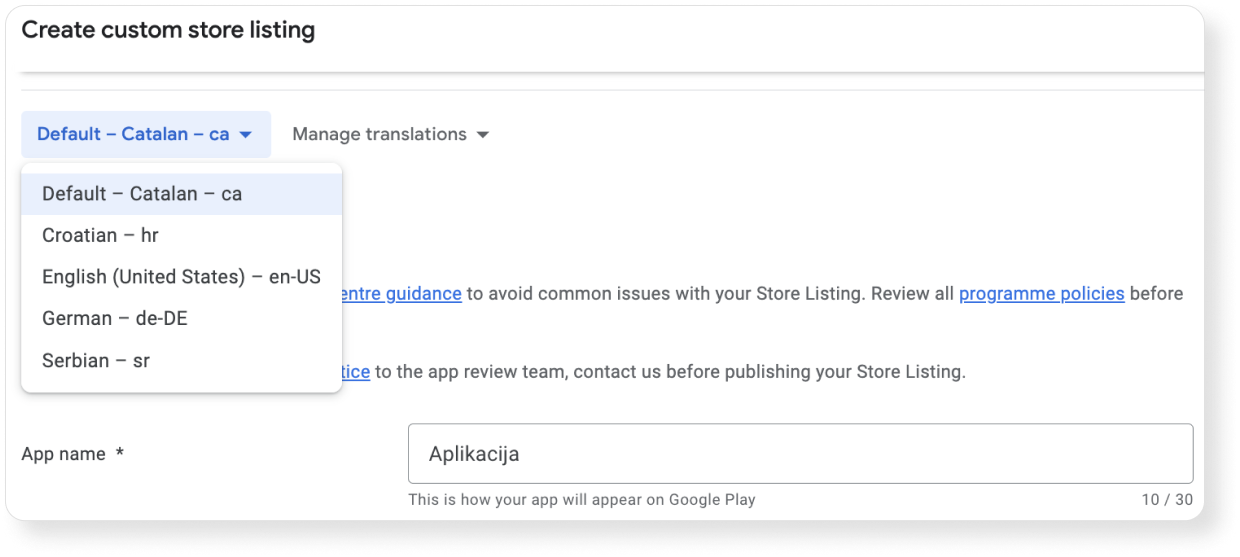
To see which languages users prefer when installing your app in the target region, click the “Store listing conversion analysis” tab. Select the “by language” viewing order and filter the data by the desired country or region.

This way, you will receive comprehensive information about language preferences in a country, which will help you not only set up the Custom Store Listing correctly, but also further optimize the app page.
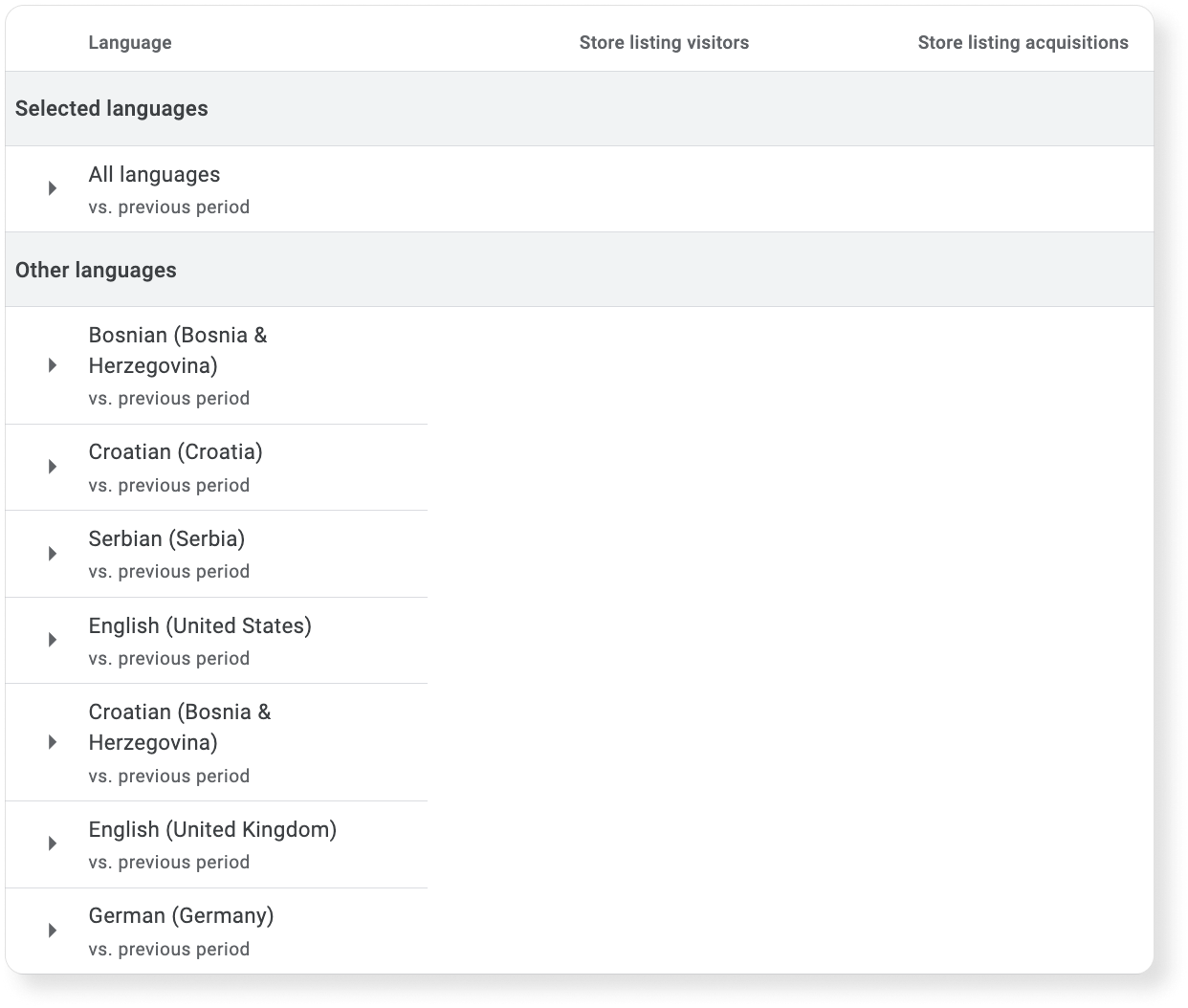
Tip # 3. Conduct A/B testing in low-traffic regions
Sometimes a significant part of an app’s revenue comes from countries where you do not attract a lot of traffic, such as a highly competitive US market. If we only gain a hundred installs per week in the US, we cannot conduct a statistically significant A/B test in this country for a sufficient time period. However, we can create a custom store listing and adjust it to the target country and regions that are similar in behavioral and linguistic parameters.
For example, you can create a page titled “English-speaking countries” and target it to the United States, United Kingdom, Australia, and Canada. For Hispanic countries, create a “Spanish-speaking countries” page.

This way, you can significantly increase the volume of traffic for A/B testing and get better results. After the successful rollout to the entire audience, don’t forget to track the dynamics of traffic in all or at least the main regions for which the page is customized. This will help avoid drawdowns.
If you run testing in several regions at the same time, refrain from traditions that may differ in these countries. For example, in the UK and the USA, Easter is celebrated differently, and if you make one Easter schedule for all regions, tests can show a positive result, but after rolling out to the entire audience in one of the regions, conversion may drop.
What’s more, this approach is not suitable for reflecting promotions and bonuses that are valid in one country and not available in another. Therefore, try to test more general hypotheses, for example, different unique selling propositions or screenshot gallery backgrounds.
Tip # 4. Run up to 255 tests simultaneously for all the desired regions using custom store listings
On the main page of the app, you can run only five tests with five localizations at the same time, which leads to difficulties. First, people in one country can speak several languages. And secondly, you may need to run tests on more than five regions at the same time.
Custom store listings help bypass this restriction: create the pages, set them up for the desired regions, and run your tests. For each new custom page, you can add the necessary localizations and conduct five simultaneous A/B tests. This will allow you to run up to 255 tests at a time.
In the screenshot below, you can see one of the projects running 51 A/B tests using custom store listings.
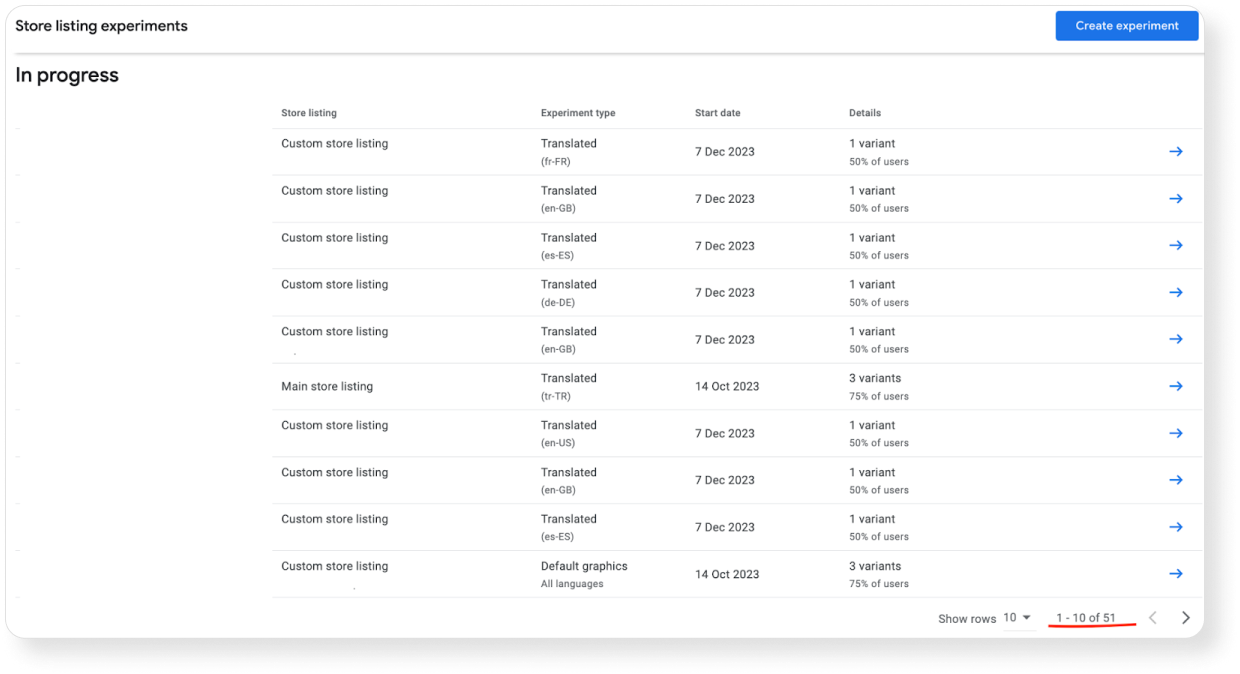
Tip # 5. Run more accurate tests for audiences who speak a specific language
Language preference does not always correspond with a single region: if we run A/B testing of en-US for the main page, it does not mean that we see how Americans perceive it. We will only know the reaction of users who specified en-US in the language settings. This can be a diverse group of people, including, for example, residents of India.
Unfortunately, with A/B testing, we can’t choose both country and language at the same time. This is why, to test the version of the app page for residents of the country who speak a certain language, you can use custom app pages.
For example, if you have enough installs for a test in the UK, and this location is a priority for ASO, then:
1. Create a custom store listing with a country setting.
2. Add the necessary localizations.
3. Run the experiment with the language you are interested in (for example, en-GB).
4. Get an English-speaking audience from the UK for your test and draw more accurate conclusions.
5. Improve conversion and installs in the region by using graphics that showed good results in tests.
This is only a small aspect of the features — the tool is constantly being improved and acquiring new functions. For example, it has recently become possible to personalize custom store listings for specific Google Ads campaigns, allowing for more accurate work on increasing conversion from this source.
Among other recent updates is a test setting for inactive users — those who deleted the app or didn’t log in for more than 30 days. It is currently not possible to run experiments on such custom store listings, but this could change in the future.
Subscribe to our newsletter and receive regular updates on App Store Optimization news, as well as informative articles covering ASO, mobile marketing, and app review management.

